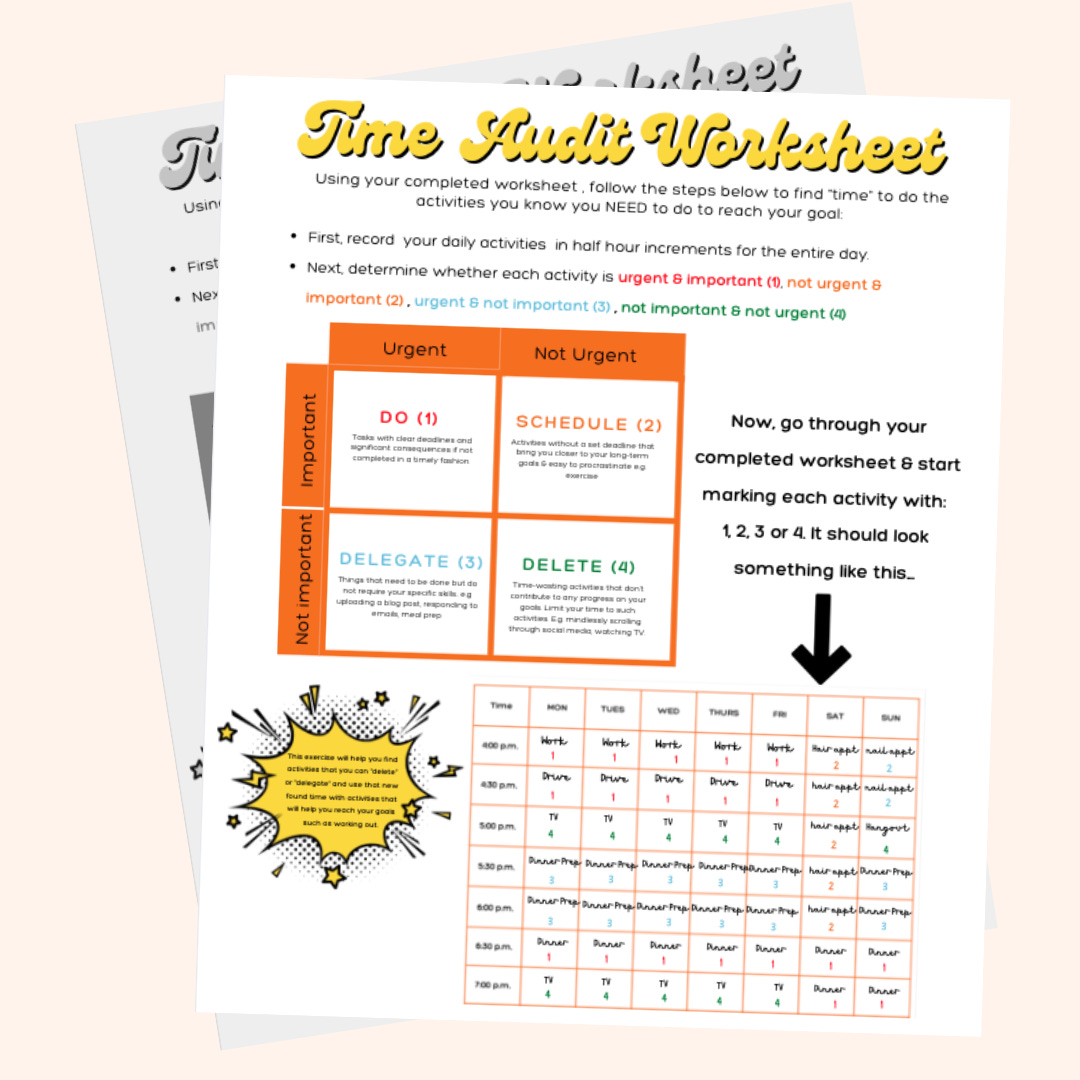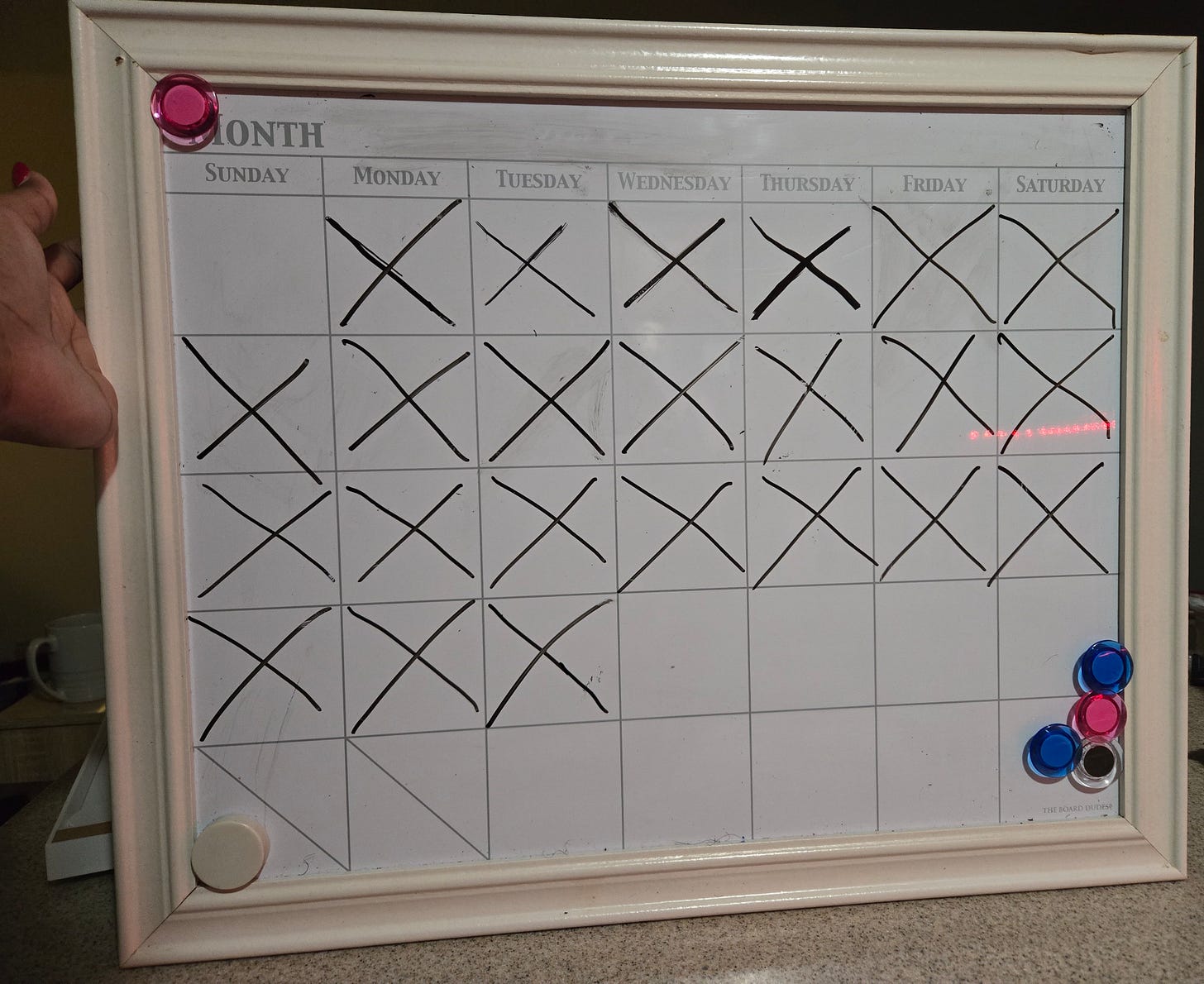Weight Loss PING! Episode 2 - Consistency: Anonymous Reader Struggles to Stay on Track.
Today's reader struggles with discipline and consistency, just like our previous reader, Kelsey. This post will help them overcome those challenges.
The Weight Loss Ping series is here to help you overcome roadblocks in your weight loss journey with practical advice and real support.
Here’s how it works: tell me what's holding you back in your weight loss journey → here, and I’ll provide tips to help you get back on track.
This is a weekly series—subscribe so you never miss a ping!
Our next ping is here… enjoy 🙂 PS: This post may contain affiliate links.
“I would like to lose 20-40 pounds within the next year… Consistency has been a struggle for me. After 2 weeks I end up falling off a bit. However I always “restart” shortly afterwards. I lost 20 pounds last year, but gained it all back. I feel less valuable, I feel sloppy, I feel like I’m not the best version of myself.” - Anonymous
Dear Anonymous reader,
First, I want to thank you for being so open about your feelings and your struggles. Sharing personal matters isn’t always easy, so I truly applaud your bravery and will do my best to help.
Before we dive in, let me share this: as a woman who's been through countless weight loss journeys, I know the sting of feeling like a failure after slipping up. But each setback taught me something, helping me improve over time. Eventually, I used those setbacks to build a program that fit my lifestyle—this is the secret to consistency; finding a plan that works for you.
In this post, I’ll share what I’ve learned to help you create a weight loss plan that fits seamlessly into your lifestyle, making it easier to stick to and succeed.
How to stay consistent with weight loss
Most people fail to achieve their weight loss goals, even with the best weight loss plan in place, because they overlook one of the most crucial pieces of the puzzle: execution.
Execution - the carrying out or putting into effect of a plan, order, or course of action.
How many times have you decided to lose weight, set your calories and workout plan, but never thought about the how, when, or where you'll go to the gym, what you'll eat to stay in a calorie deficit, or when to meal prep?
How you execute your plan is the key to staying consistent. Making decisions on the fly and relying too much on willpower sets you up for failure—it’s the fastest way to burn out and give up.
For your plan to work, it needs to fit your lifestyle with minimal resistance. The easier you make the changes, the more likely they are to stick. Stick with it for at least 66 days, and a new habit will form—no willpower required.
Here is how you get it done.
1. Do a time audit.
A time audit gives you a clear picture of how you’re spending your time, helping you find where you can cut back and make room for the actions you need to take to reach your goal.
One of the biggest excuses women give for not working out is not having the time. This exercise will help you find that time.
You can download your copy of my time audit worksheet here.
a) If you don't work a 9-5, use the time audit worksheet to find time for your workouts and schedule them accordingly.
If possible, try to keep your workouts at the same time each day. If not, just choose the time that works best for you.
b) If you work a 9-5 job, schedule your workouts around your work hours. If that’s not feasible, follow the advice in a) above.
Most people have a set routine Monday to Friday, with weekends being more spontaneous. The goal is to fit your workouts into your current routine with as little resistance as possible. If you work 5 days a week and schedule your workouts on those same days, you’re already on track to succeed.
"The key is not to prioritize what's on your schedule, but to schedule your priorities." - Stephen Covey
A quick word on your diet: Using your time audit, pick a specific day (or block of time) to plan your meals, then schedule when you'll go grocery shopping and meal prep. It might seem like a lot at first, but trust me, you'll save time and won’t have to rely on willpower.
2. Stack your habits – choose a trigger.
Now that you’ve scheduled your workouts, it’s time to get a habit loop going so it sticks. We’ll start with habit stacking.
“Habit stacking is the process of linking a new habit to an existing one.” - James Clear
Think of it like piggybacking. Instead of trying to fit a new habit into your schedule, tie it to something you already do.
For example, let’s say you decided to exercise every day after work. You could stack the habit like this:
”After I clock out from work, I’ll drive straight to the gym”.
For this to work, it’s important to pick something very specific and immediately actionable. Saying, “I’ll go to the gym after work,” is too vague. If you finish work at 5 PM, technically, any time after that qualifies, right? That’s the problem—it’s not specific enough. Instead, tie your goal to a clear action. Here’s another example, when you close your laptop (the trigger), immediately put on your running shoes and head out for a run. The more specific your trigger is, the easier it becomes to stick to your plan.
Why Does It Work?
“Our brains love patterns, and by attaching a new habit to an existing one, we’re creating a natural flow. It eliminates the decision-making process because we already know what’s next.” - James Clear
3. Use visual cues to complete the Routine.
You’ve scheduled your workouts and set a trigger. You made it to the gym—now what? Do your workout, girl! Here’s a tip to keep you motivated and consistent:
Ever heard of Jerry Seinfeld’s “Don’t Break the Chain” productivity hack? It’s pure genius.
The idea is to commit to a daily task that moves you toward your objective—for Seinfeld, it was writing jokes every day. To track his progress, he used a large wall calendar and marked an "X" over each day he completed his task. As the days passed, these Xs formed a chain. The visual streak of consecutive days became motivating; the longer the chain grew, the more determined he was not to break it.
How you can apply this:
Pick one habit you want to stick to—let’s say it’s working out. Grab a calendar (like this one) and hang it somewhere you’ll see every day. Each time you complete your workout, mark that day with a big satisfying X.
Here’s a picture of mine below:
Why does it work?
It’s visual, it’s rewarding, and it taps into your natural drive to keep momentum going. Missing one day feels like breaking a promise to yourself, and you’ll be more motivated to show up again tomorrow.
It’s like a game and your only goal is to keep the streak alive. Day by day, those X’s will form a chain, and trust me, you won’t want to break it. By concentrating on not breaking the chain, you create momentum and discipline over time.
4. Post-Workout Ritual
Now that you’ve worked out, you’re feeling great, your serotonin is flowing—but there’s one final step to complete the loop and lock in the habit.
A reward.
Some see the serotonin boost as a reward, but why stop there? Treat yourself to something you truly enjoy right after your workout—like a refreshing smoothie (just stay within your calorie deficit) or my personal favorite: a warm, bubbly bath.
This added treat becomes a reward your brain looks forward to, making it even easier to stick to your routine.
Conclusion:
If you’re familiar with the habit loop from Charles Duhigg’s The Power of Habit: cue → routine → reward, that’s exactly what we’ve created here.
Cue/Trigger: After I clock out from work, I will go to the gym.
Routine: The workout (mark an X on your calendar each time you complete it to stay motivated).
Reward: Serotonin boost and a warm bath.
Now it’s your turn—use this framework to create a cue → routine → reward that fits your life.
Remember, once you build the habit, consistency will follow.
Do you have a weight loss PING? send it here.





